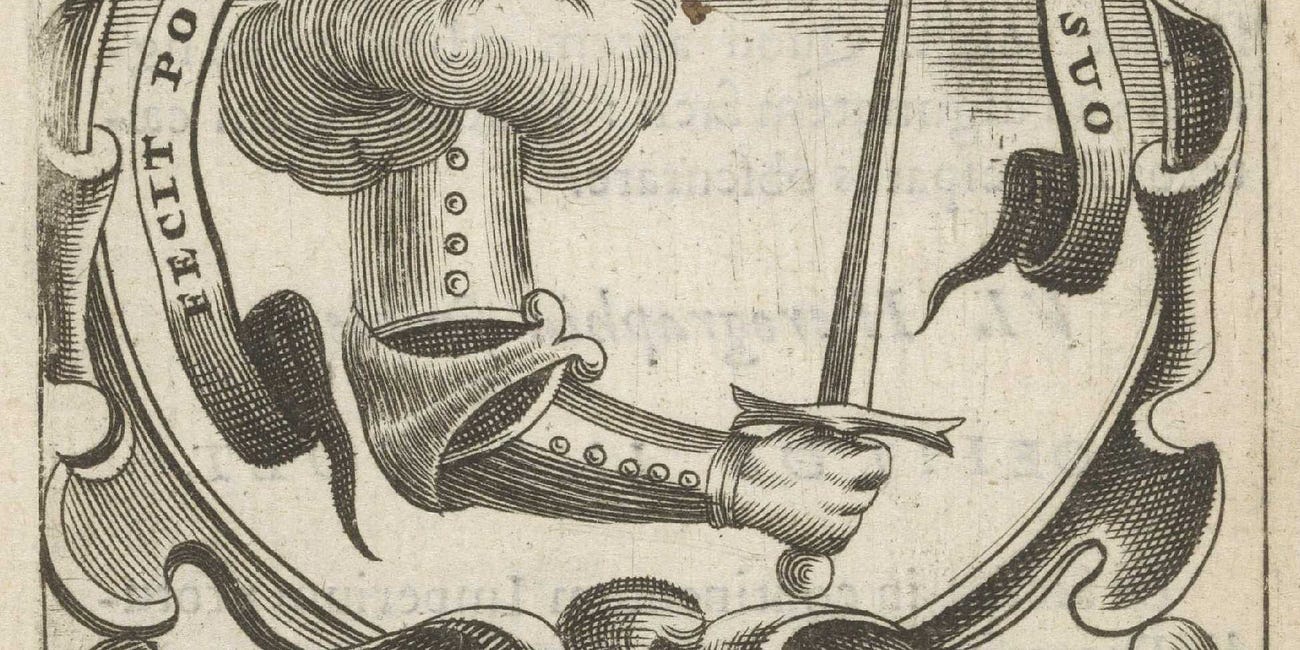Which Version of the English Bible Should I Pray With?
When meditating on the Word of God, choose a Bible translation that works best for you—but whatever you do, don’t go with a “contemporary English” version
Longtime readers will know that I am an ardent proponent of lectio divina — that is, the traditional method of praying with Sacred Scripture. (See, for example, this article and this one.) Once upon a time, reading the Bible was the privilege of clergy and religious who were educated and had access to libraries of handwritten books. Today, with literacy at an all-time high and printed Bibles abundantly available, we have really no excuse not to be applying our literacy to pondering and praying with the revealed word of God, at least at regular intervals.
Inevitably, the question arises: “What’s your favorite translation/edition of the Bible? Which one should I get?” The market in English is glutted with options. According to one estimate, there are over 450 versions (and counting!).
It is a difficult question to answer for many reasons.
First, while the Church, based on many centuries of constant practice and teaching, established the definitive canon of Scripture at the Council of Trent, she has never “canonized” a particular edition of the original languages (Hebrew and Greek) or a particular translation, saying: “This, and this alone, you shall use.” The Vulgate is the most honorable, influential, and “safe” edition, because Trent confirmed that it is free from error in matters of faith and morals, which cannot be claimed for any other version of the Bible.
However, as with papal infallibility, this is a negative guarantee: the Vulgate is free from doctrinal and moral error. That does not mean that it is a perfect translation, with no grammatical mistakes, or no possibility of improvement. Anyone who knows about the challenges of moving from one language to another knows that there is no such thing as a perfect translation. On the one hand, terms or phrases often have multiple valid translations, each conveying a different nuance; on the other hand, the base text itself can exist in better or worse editions (that’s why we have so-called “critical editions,” which attempt to produce the best-quality base text possible). Indeed, St. Jerome himself made three different Latin versions of the Psalter, and he probably wasn’t satisfied with any of them!
St. Augustine articulates a commonsense principle in De Doctrina Christiana when he says those who cannot read the original languages (which is obviously the best thing: the Old Testament in Hebrew and the New Testament in Greek) ought to avail themselves of a panoply of translations so they will not get stuck on any one rendering, but deepen their understanding by comparing and contrasting the different versions. This advice is intended primarily for preachers, scholars, and apologists — for those who will make arguments based on Scripture. Lectio divina isn’t supposed to be a time of academic study, where our desk is strewn with concordances and lexicons and a critical Hexapla, but rather a time of meditative encounter with the Lord, so we should seek out a version that will suit this purpose well, from among the versions that have good reputations among conservative or traditional Christians.
Here I will run the risk of alarming or scandalizing some “rad trads” by making two points about the classic English version called the Douay-Rheims.
First, what most people call the “Douay-Rheims” is not the original Douay Old Testament of 1609 and the original Rheims New Testament of 1582; it is, instead, the much revised Challoner edition from two hundred years later, which was updated in light of the King James Version — a fact easy to confirm by looking at the texts. The original version has been made available again thanks to the efforts of Dr. William Von Peters, who modernized the spelling but otherwise left the words intact; there is also an online version, as yet incomplete, with the original orthography.
Second, while I find the Douay-Rheims an admirable version in many ways, and I frequently use it in my writing and consult it against the Vulgate, it is not my favorite version for lectio divina. Unlike the poetic diction of Shakespeare, the Douay-Rheim’s language is stilted, awkward, and at times baffling in meaning. For me, trying to pray with it is a bit like trying to walk a long distance in ill fitting shoes, or swimming with weights on. I know there are others who don’t feel this way, and that’s fine; my point is that there’s no requirement to use this or any version of the Bible for our personal prayer. We ought to look for a translation that combines dignity of style with accuracy, in an idiom that is not distracting to us, but rather brings us into the presence of God with a holy fear.
For that reason, my favorite Bible for prayer is the five-volume Biblotheca, which uses what it calls “the American Literary Version,” a slight modernization of the American Standard Version, itself based on the King James.
“But should Catholics be reading the King James Version?”
Over at The Lamp, Sean Pilcher has written an absolutely delightful article on the many literary and cultural strengths of the KJV, in spite of its occasional inaccuracies and its mixed history of misuse at the hands of Protestants. Pilcher sensibly concludes:
The point here is not to insist on the Authorized Version exclusively but to insist that if it already holds some place as a default, Catholics can take it up and tell others what it really says. The Authorized Version is probably more Catholic than the Corinthian column or the Egyptian obelisk, and both of these now, taken up and baptized by Catholic use, can serve the right worship of God in His Church. If the acanthus leaf can be put to legitimate use, then so can this treasure of our English language.
Indeed, that is the simple truth. Its beauty as a translation more than makes up for its occasional deficiencies if one is using it for devotional purposes, and not for academic study, theological work, or apologetics. In such cases, one might still consult and cite it, but always (as we saw St. Augustine recommending) alongside other versions, including the Douay-Rheims, and with the benefit of whatever scholarly tools may be helpful. In any case, I recommend opening a tab to Pilcher’s piece and reading it when you finish this one, time permitting.
Resuming the thread: Bibliotheca belongs to the now burgeoning genre of “reader’s Bibles,” meaning Bibles that have little or no “apparatus”—no chapter and verse numbers, no footnotes, no running headers or section headings, no cross-references or language notes, just the text, and usually printed in one column in a comfortable font on thicker paper. Basically, it presents the appearance of a normal modern book so that one can enjoy the reading of an uncluttered text.
While I have many other Bibles on my shelf for scholarship and literary work, I find Bibliotheca’s approach ideal for “getting lost” in the story and in the message. I use it for lectio divina and love everything about it: the translation, the typeface, the layout of the page, the lack of clutter, the binding and ribbon. In my opinion, it’s the ideal reader’s Bible and beats the competition by cubits and fathoms.
Yes, from a Catholic point of view, it could be better: the books of the Old Testament are arranged in Hebrew/Protestant fashion, with the deuterocanonicals separated out into a volume called Apocrypha. But after using it for almost ten years, I would still say it is the best I have found for quiet, reflective reading, and my intention is to continue with it. I want to re-emphasize that there is plenty of room for differences in personal preference, and that Bibliotheca may not be everyone’s cup of tea (for one thing, it’s fairly pricey). Some may find more solace and light in the Douay-Rheims (Vetus or Novus), or in the Revised Standard Version (as found in the Ignatius Bible), or in the English Standard Version (as found in the Augustine Bible).
The one inflexible piece of advice I will give, however, is that any translation we use should not be in “contemporary English” as it is spoken — or rather, cheapened and slaughtered — in today’s society. This is why I will not tolerate Scripture in the Nabbish dialect (i.e., the language used in the NAB or New American Bible). If you want to know why, read the sad but entertaining articles of Anthony Esolen on the topic, such as “A Bumping Boxcar Language,” “More NAB Nonsense,” and “The NAB: Round Three.” (See also David Lyle Jeffrey’s “Our Babel of Bibles.”)
There are many reasons for this inflexible judgment in favor of traditional translations. One such reason is well articulated by Fr. Luke Bell in Staying Tender: Contemplation, Pathway to Compassion (Angelico, 2020), when he explains why he chose to quote from the King James Version:
Readers of early drafts of the book have suggested that this might be more difficult for people to get their head around than a modern version, so a word of explanation is in order. I don’t want you to get your head around it. I want it to get into your heart. I have chosen this version because it is poetic. T. S. Eliot observed (in connection with Dante) that “genuine poetry can communicate before it is understood.”
That is to say that what comes through it is more than what the mind can grasp, at least to begin with. It speaks first of all to intuition rather than to any analytical faculty. That in us which sees the whole is touched by the poet’s own vision of the whole, its words awakening in us what awoke the words in him or her. Just as an inspiration of the oneness of creation can sometimes come through the beauty of nature, so a sense of the one divine source of all meaning can sometimes be received through poetry. It is the genre of the transcendent. Through it can be heard an echo of the music of eternity.
If all this is true of poetry it should be true a fortiori of versions of Scripture, which is above all the text through which the transcendent comes to us. If we word it so it reflects back to us the quotidian banalities of our own speech with all the limitations of its vision, reducing in effect what it speaks of to that of which we speak, then we tend to make it tamer than it should be. We risk the complacency of thinking we have mastered it replacing the aspiration that it should master us…
An older version, written when the language was richer and less abstract, is more likely to make us pause before the mystery, to humble us before the numinous, to open us to what comes from beyond.
This perspective is entirely sound. And this is why it makes me happy when priests at the TLM read a classic translation from the pulpit before giving the sermon.
Thank you for reading, and may God bless you.
Further Reading:
Don’t Keep the Sword of God’s Word Sheathed
Last week, I shared some advice on battling OCD and scrupulosity. Among my advice was the following:
Why We Should Follow the Traditional Catholic Numbering of the Psalms
The Bible was not divided into chapters until the 13th century, and verses came along in the 16th century. There are obvious benefits to having numbers for chapter and verses, especially for scholars; however, it must be admitted that it leads to a cluttered appearance on the page. As some have pointed out, when you open a typical modern Bible that is printed as single volume, the appearance is busy, not to say daunting: two columns of fairly small and dense text, strewn with numbers and footnotes. It is hardly a “reader-friendly” experience.
What Should Take Precedence: Tradition or Scholarship?
Christus surréxit! Surréxit vere, allelúia! I wish all my readers a very blessed Easter. I hope that your celebration of the Triduum and Pascha was full of blessings.
Show Us Thy Face, O Lord
“Come to save us, O Lord God of hosts: show Thy face, and we shall be saved.” (cf. Ps 79:8)









Speaking of poetry, the 23rd Psalm (22nd in the DR) in the KJV is just beautiful. Besides the KJV and DR, I also use the RSVCE2.
Nice article. When I went onto the Bibliotheca sites last night I noted the description of contents at least referenced the Catholic books as "Apocrypha (Deuterocanon)"
Personally I find the Jerusalem Bible (1966) a great version for Lectio and meditative reading. I have the readers edition as well as the very good 1966 study edition which is far superior to the NJB and the recent RNJB. It has orthodox notes and the most comprehensive and best cross references of any Catholic Bible. It does take some time adjusting to the usage of "Yahweh", (which I wish they had at least rendered YHWH), but like the Jews, one learns to mentally or verbally replace with LORD as one reads.
I find the style quite poetic and memorable, and gain fresh insights every time I read the JB. Much prefer it to the RDVCE or ESV. It is also the version used in the Divine Office in Australia and I have a subscription to the app Universalis with audio, so I praying parts of the office is with the JB every day